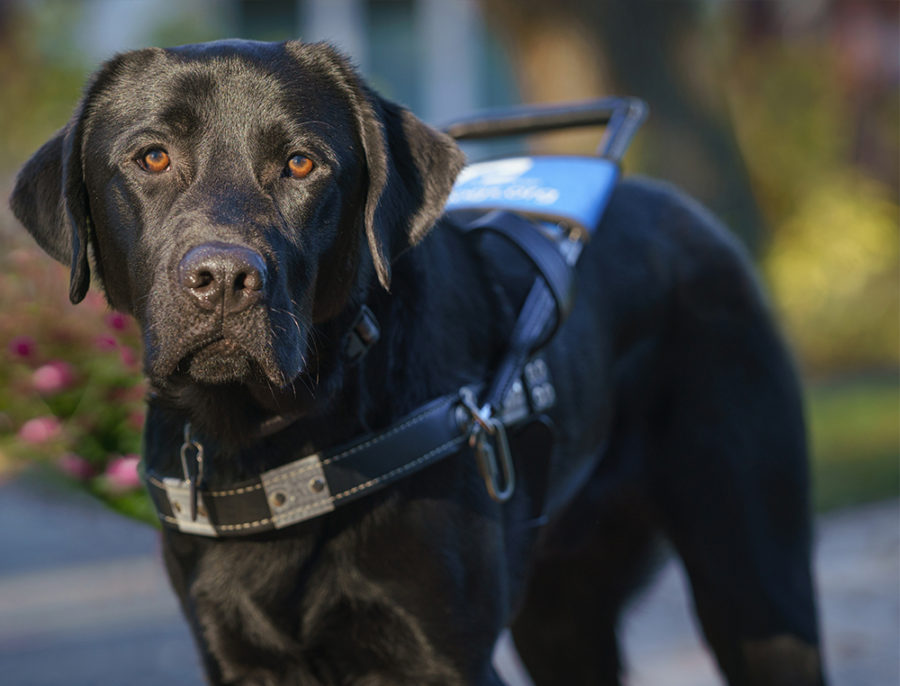The Fake Service Dog Epidemic
The Harm They Cause to Real Service Dogs and Their Owners
December 6, 2022
Have you ever been in a store or restaurant and seen a dog with a vest that says Service Animal? Have you wondered why those dogs are allowed to be in a public space and your furry companion isn’t?
This is because service dogs are allowed to be there by law. A service dog is defined as a dog that is trained to do work or perform specific tasks for an individual with a disability. For example, a guide dog for the visually impaired or a dog that can detect seizures and alert their owners.
Under the Americans with Disabilities Act, (ADA) it’s required that “state and local government agencies, businesses, and nonprofit organizations that provide goods and services to the public make reasonable modifications in order to accommodate individuals with disabilities.” Service animals are legally allowed to go wherever their handler goes, even if that place has a “no pets” policy.
Unfortunately, because service animals have special rights, some pet owners will buy fake service dog vests or IDs online and claim their pet is one, just so they can take their dog with them wherever they go. These pet owners know that businesses won’t turn you away if you say your dog is a service animal, whether or not that’s actually true.
According to ADA laws, business employees can ask people entering with animals two questions: Is that a service dog, and what is it trained to do? There isn’t any paperwork that comes with real service animals. Because this is the only requirement, it’s very easy for regular dog owners to lie and be allowed entry.
The problem this causes – besides being illegal – is that service dogs are trained in obedience and the special tasks they must perform. These fake service animals are not. While some of the dogs might have basic obedience training, like sit or stay, they’re still just normal dogs. They haven’t gone through the rigorous training of service dogs. Guide dogs, for example, are taught to ignore food they might smell on the street, so as not to misnavigate their handlers. Service dogs know how to behave in public places – laying at their owner’s side, not barking or causing a scene – and fake service dogs usually don’t.
These fake service dogs that disrupt public spaces give real service dogs a bad reputation. Business owners might have had bad experiences with disobedient dogs in the past, and thus aren’t willing to allow the real service animals into their business in the future.
Sometimes, the safety of the real service dogs can be a concern. If there’s a fake dog in the same place as a real dog, and the fake dog gets aggressive or excited, it could cause harm to the real service animal, possibly harming or distressing the owner as well.
Some people might argue that official service animals are unaffordable or difficult to obtain, so a person with a real need might have to get a fake one. Firstly, this still means that the dog wouldn’t be specially trained in the way that a real service dog would be. Secondly, this logic is untrue. Most service dogs are given to the owners free of charge – thanks to donations that allow them to pay for them – and provide lots of on-site training at their facilities.
Callie Dyches, a future guide dog user, says “I don’t think service dogs are that hard to get. There’s a lot of nonprofits out there that will train the dog for you. You have to vet them to make sure they’re reliable and real. But they’re not hard.”
Callie is currently on the waitlist to get a guide dog from Southeastern Guide Dogs, located in Palmetto, Florida. She spoke about the process of obtaining a guide dog and proving that you have the need for one.
“You have to submit a bunch of proof of disability forms…so I had to submit different vision forms that show the extent of the disability and then you also have to be able to prove that the dog would actually benefit you in some way. Because even if you have a disability, that doesn’t necessarily mean a dog’s gonna help you at all.” says Dyches.
It’s not that difficult for a person with a disability to get the service dog they need, but, sadly, creating a fake one is even easier. People buy IDs and vests just so they can take their beloved pet with them. This does so much harm to the service dog community and the real needs of the owners.
Dyches sums it up well. “The problem with all the fake service dogs is that they kind of de-legitimize the real ones. So when people come across a service dog, they don’t know whether it’s real or not real, so they don’t know what to do about it…they also create a perception of what a service dog should look like that isn’t necessarily true.”






